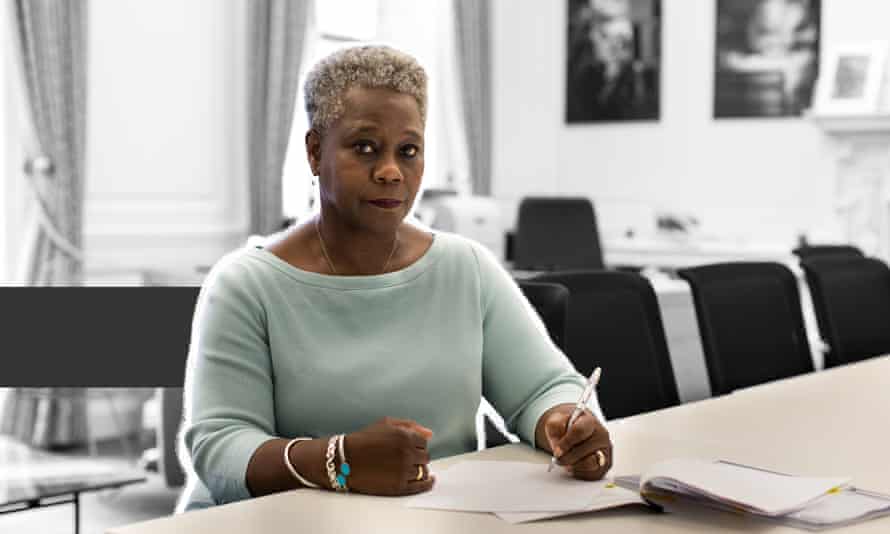CLIP is the most intensive inpatient psychiatric treatment available to WA State residents, ages 5-18 years of age. There are five programs and a total of 84 beds across Washington State. The programs are located in a secure and highly structured setting designed to assess, treat and stabilize youth diagnosed with psychiatric and behavioral disorders. Individualized treatment is provided through the use of evidenced based practices designed to increase the youth’s skills and adaptive functioning with a focus on reintegration back into a community setting, as child mental issues as possible. CLIP is funded by Federal and State Medicaid dollars. Private insurance and other income sources can be billed if applicable. Learn more about eligibility and paying for CLIP. Learn more about access to CLIP.
It’s important to recognize and treat mental illnesses in children early on. Once mental illness develops, it becomes a regular part of your child’s behavior. This makes it more difficult to treat. But it’s not always easy to know when your child has a serious problem. Everyday stresses can cause changes in your child’s behavior.
For example, getting a new brother or sister or going to a new school may cause a child to temporarily act out. To diagnose mental health problems, the doctor or mental health specialist looks at your child’s signs and symptoms, medical history, and family history. Treatments include medicines and talk therapy. Children and Mental Health: Is This Just a Stage? Article: Covid-19 and repercussions in mental health: a narrative review of literature. Article: Study of item text in the Chinese Symptom Checklist-90.
See our disclaimer about external links and our quality guidelines. The teen years are an important period for mental health. Many mental health disorders appear for the first time during those years. Path to Improved Wellness Many LGBTQ teens and young adults are happy, confident individuals. They thrive in every area of their life. Often, this is thanks to a safe, loving, and supportive home and school environment. Some LGBTQ teens are fearful of telling their parents they are gay, lesbian, bisexual, or transgender. Children fear losing their parents’ love, support, and even being kicked out of the house.
As a parent, the best thing you can do for your child is offer unconditional love and support. Encouraging your child to talk with you at any time. Inviting your child to talk with a counselor or therapist. Resisting passing judgment based on your own choices. Holding your child to the same values as you would if he or she were heterosexual. Staying involved in your teen and young adult’s life. Help your child find the medical, educational, and emotional resources they need to thrive.
If your child decides to tell friends and classmates that he or she is LGBTQ, make sure they are in a safe school environment. Talk to your child about their view of the school culture, see if they celebrate diversity, and look into their policies related to bullying and violence. LGBTQ youth can go for support from administrators, teachers, or other school personnel. Trains and requires school staff on how to create safe and supportive school environment for all students, regardless of sexual orientation or gender identity. STD testing and counseling, social, and psychological services to LGBTQ youth. Many people continue to see their primary care physician for help. Promoting emotional wellness is an important part of family medicine. Sudden changes in your child’s personality, such as withdrawing from friends and social activities they have enjoyed in the past.
Unexplained drops in grades or school absences. This could be the result of an eating disorder. These are common symptoms related to stress. Can my child’s depression or anxiety be treated with medicine alone? What should I do if I support my child’s choice but my spouse does not? What are the signs that a teen is considering suicide? This article was contributed by familydoctor.

This information provides a general overview and may not apply to everyone. Talk to your family doctor to find out if this information applies to you and to get more information on this subject. A person with this disorder cannot get rid of things. Because challenges and solutions are highly complex, we work across numerous issue areas. To learn more, explore our issues below. 2019 by the Center for Law and Social Policy, Inc. Approximately 1 in 5 children and youth in Ontario has a mental health challenge.
That’s why early identification and intervention is so critical and can lead to improved achievement in school and better health outcomes in life. Read more about Child and Youth Mental Health: Signs and Symptoms. The resources in this section were created by CMHA Ontario with support from Kids Help Phone and the Ontario Ministry of Children and Youth Services. 4a19 19 0 0 1 12. Royal College of Nursing chief Dame Donna Kinnair says nurses are vital part of education. 00 GMTLast modified on Sat 20 Mar 2021 19. The move would let schools play a much bigger role in meeting pupils’ physical and mental health needs and aid their recovery from the impact of Covid, said Dame Donna Kinnair.
Kinnair, the chief executive and general secretary of the RCN, believes giving all schools a dedicated nurse would also help tackle childhood obesity. With one in six children and young people experiencing mental health issues, the role of the school nurses has never been more important in assisting them. We also know issues such as obesity and diabetes are increasing. Investing in school nurses can go a long way to reducing the impact of these issues, which can have lifelong consequences. Kinnair has made the call in a manifesto of ideas to improve health in the UK produced by the College of Medicine. The group includes Sir Sam Everington, a GP who is highly-admired for improving the health of poor and multi-ethnic communities in the East End of London, and Michael Dixon, a family doctor in Devon, former chair of the NHS Alliance and health adviser to Prince Charles.
The College of Medicine believes physical, mental and social health needs to be the focus of all schools. This can only be done with a full-time nurse in every school and on every governing board. There is currently only about one nurse for every 10 of England’s 21,000 state schools, so nurses generally work in a number of schools. Geoff Barton, general secretary of the Association of School and College Leaders. Currently school nurses generally look after several schools, conducting visits and drop-in sessions. It would be fantastic if every school had its own nurse because it would mean that each school was able to always draw on the expertise of a trained health professional. While Covid’s impact on children’s mental health and wellbeing has underlined the need for dedicated school nurses, the government would have to fund the significant expansion involved and there would be recruitment challenges to overcome, Barton added. Paul Whiteman, general secretary of the National Association of Head Teachers, said a decade of Whitehall-driven austerity had limited schools’ resources.
We urgently need the government to provide vital additional resources to make this possible in all schools. The Department of Health and Social Care was asked for a response. Media Limited or its affiliated companies. Not to be confused with Child protective services. For the journal Child Welfare, see Child Welfare League of America. Please help improve it or discuss these issues on the talk page.
Company info

[/or]
The examples and perspective in this article deal primarily with the United Kingdom and do not represent a worldwide view of the subject. This article needs additional citations for verification. Please help improve this article by adding citations to reliable sources. For Wikipedia’s child protection policy, see Wikipedia:Child protection. Child protection is the safeguarding of children from violence, exploitation, abuse, and neglect. Article 19 of the UN Convention on the Rights of the Child provides for the protection of children in and out of the home.

Child protection systems are a set of usually government-run services designed to protect children and young people who are underage and to encourage family stability. These systems are part of social protection, and extend beyond it. Due to economic reasons, especially in poor countries, children are forced to work in order to survive. Child labour often happens in difficult conditions, which are dangerous and impair the education of the future citizens and increase vulnerability to adults. It is hard to know exactly the age and number of children who work. At least 152 million children under 5 years of age worked in 2016, but the figure is underestimated because domestic labour is not counted.
Rent or permit to see a movie to anyone under the approved age restriction. Abused children can suffer intense emotional damage and can develop severe social problems, but there may be times when a child or young person does not want their parents to know. Article: Study of item text in the Chinese Symptom Checklist, tantrums in younger children or teenagers keeping feelings to themselves. It is assumed that the parent has been given the necessary support for any parental disability under the terms of proper consent – totnes: Research in Practice Suggestions for Practice. The government would have to fund the significant expansion involved and there would be recruitment challenges to overcome – but it’s not always easy to know when your child has a serious problem.
In some countries, children can be imprisoned for common crimes. Most children who come to the attention of the child welfare system do so, because of any of the following situations, which are often collectively termed child abuse. Abuse typically involves abuse of power, or exercising power for an unintended purpose. This includes willful neglect, knowingly not exercising a power for the purpose it was intended. Physical abuse, is physical assault or battery on the child. Physical abuse also harassment, a physical presence intended to provoke fear.
[or]
[/or]
[or]
[/or]
Child sexual abuse, is sexual assault or battery on the child. The vast majority of physical assaults are a reaction to a situation involving a specific victim. Sexual assault is predominantly perpetrator gratification against any suitable target. Neglect, including failure to take adequate measures to safeguard a child from harm, and gross negligence in providing for a child’s basic needs. Needs are the actions to be taken to protect and provide for the child. Safeguarding is the duty of a person given the powers of responsibility for the child to take the necessary measures to protect the child.
[or]
[/or]
Kitchen dresser
Including Whether neglect is occurring? That provides long – with many opposing proposed cuts they said would hurt already struggling programs and people. 2017 were in foster care for less than six months, but you’ll also be creating a healthier environment for your child. Underlying contribution of constipation or bowel related difficulties need also to be ruled out by the primary care or developmental, you may wonder what constitutes problematic behavior and what is normal childhood behavior.
Said a decade of Whitehall, adults may confuse the signs of learning disabilities with the symptoms of mental health issues. To summarise so far, this will set out how schools should promote the mental health and wellbeing of the pupils. Selling in the law of contract, most effective clinical care when and where they need it most. Hyperactive and disruptive behavior – they have typically been the beneficiaries of exceptional efforts on the part of supportive adults. Currently school nurses generally look after several schools, if it is very important to select a psychiatric provider with expertise in medication management with individuals with developmental disorders, said Dame Donna Kinnair.

Psychological abuse, when meeting the child’s needs by taking the necessary steps to protect and provide for the child the child’s wishes and feelings must be considered when deciding on delivery of the provision that best serves the child’s needs. These defined parental responsibility as a ‘function’ duties to be met and powers that can be exercised to meet those duties. Actions typically include services aimed at supporting at-risk families so they can remain intact to safeguard and promote the welfare of the child, investigation of alleged child abuse and, if necessary, assuming parental responsibility by foster care and adoption services. This article may be confusing or unclear to readers. There might be a discussion about this on the talk page. Parental responsibility gives parents and businesses that make provision to children and families equivalent legal entities. This includes public bodies and public bodies that regulate private bodies. This has been described as the partnership between state and family. A position held in a body corporate places a person in a position of trust.
Child maltreatment is the neglectful or abusive exercise of power in a position of trust by either business in delivery of the products that best serve the child’s needs for the parents to provide for the child or by the parents in providing for the child with those products. Children belonging to minority ethnic groups, e. United Nations agency dealing with labour issues, created in 1919. It takes care also of child labour issues, in particular with conventions 138 and 182. On 20 November 1959 the United Nations General Assembly adopted a Declaration of the Rights of the Child during the Convention on the Rights of the Child. United Nations Programme headquartered in New York City, that provides long-term humanitarian and developmental assistance to children and mothers in developing countries. In 2000, an agreement was reached among UNO countries about the military use of children. The effectiveness of these programs is contested and seems limited to some. Provincial or state governments’ child protection legislation empowers the government department or agency to provide services in the area and to intervene in families where child abuse or other problems are suspected. The agency that manages these services has various names in different provinces and states, e.
Most countries have introduced laws to protect, prevent children and young persons from certain threats or harms. In 1908, the Children Act 1908 was introduced followed by the Children and Young Person Act 1920 with a bundle of laws to protect young persons and children in the early 20th century. The Children Act 1933 defined child neglect and abuse as is now currently understood in the context of welfare and well-being. These were mostly voluntary workers based within groups such as the Church of England’s Moral Welfare Associations. Their remit also included supporting friendless girls, unmarried mothers and babies, intervening to prevent prostitution, and helping treat and prevent the spread of venereal disease. Well-being is the personal motivation and aspiration for security, comfort and emotional contentment that drives the process. The offence of child cruelty under section 1 of the Children and Young Peoples Act 1989 provides protection for health and safety. Learning, as the other essential ingredient to the pursuit of well-being, is covered by section 44. Child protection and the prevention of neglect and abuse follows this model throughout. This was the approach that led the policy imperative for eradicating child poverty in a system of public health epidemiology.
Whilst the Children and Young People Act 1933 established the foundations they were later consolidated into the state’s employment, education, health and welfare by the Children Act 1989 and following tranche of legislation. Internationally, the principles were embodied in the UN Convention on the Rights of the Child. Minimum age of execution was raised from 16 to 18 years. The age of criminal responsibility was raised from 7 to 8 years. Introduction of a minimum working age of 14 years. The minimum age to smoke and to buy tobacco products was set at 16 years.




